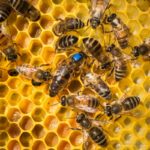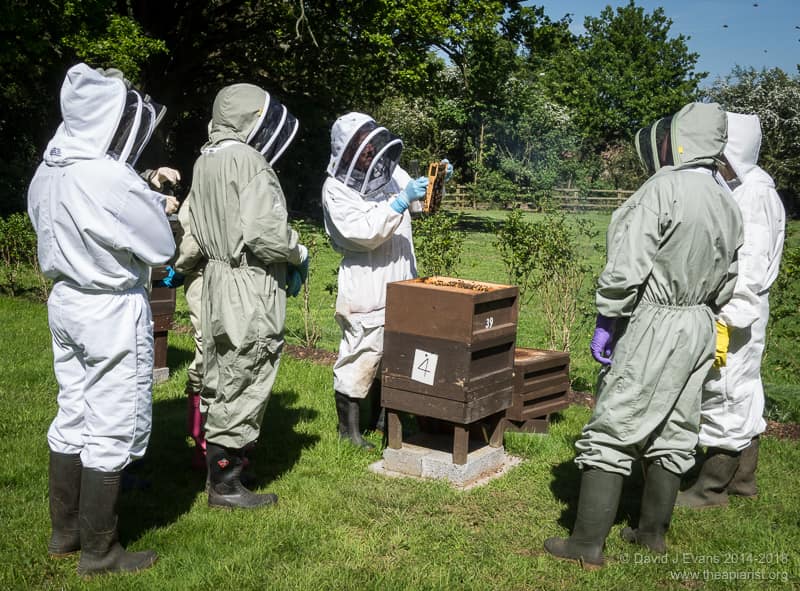Ben Harden queen rearing - intro

Locally bred queen
The ‘Ben Harden’ method is an approach used to raise queen cells in a queenright colony. It offers a number of advantages that make it particularly suitable for relatively small-scale beekeepers, for beekeepers who want only a limited number of queens (10’s rather than 100’s, though the latter is possible if well organised) or for beekeepers who are taking their first steps in queen rearing. Consequently, it is also suitable for using within an association during queen rearing courses.
The advantages include:
- it requires only a limited amount of additional equipment, including a spare brood box and two overwidth “fat dummies“
- it uses honey production colonies in a way that has little or no impact on foraging, and hence nectar collection
- it uses a queenright colony which does not need to be “boiling with bees” and which is both easier and more pleasant to handle
- it requires only limited manipulations of the colony
The general principles of this approach are straightforward and are reasonably well described by the late Dave Cushman modified from an article by Ben Harden in Bee Improvement (the BIBBA magazine). Further information is available in A simple method of raising queen cells written by Ben Harden (#59 in the Beekeeping in a Nutshell series available from Northern Bee Books).
This is the first in a short series of posts covering the basics of queen rearing using the Ben Harden queenright method. Each post covers one of the key stages in the method, which are:
- Preparation of the equipment and setup of the colony for queen rearing (part 2; Ben Harden queen rearing – setup)
- Grafting larvae (part 3; Grafting) and production of queen cells (part 4)
- Getting virgin queens mated (part 5)
It is possible to use this method to raise queens if you start with a single colony, using it as a source of larvae, the cell raising colony and the colony used to harvest nurse bees for populating the mini-nucs from which the virgin queens will be mated. This is not really recommended … at the very least you need a range of colonies to judge and choose the best as the donor for the larvae.
It is a also very good method to use in associations running queen rearing courses. Individuals taking part prepare a colony for cell raising, grafting is done communally using good stock and cells are distributed 24 hours after grafting.

Join the discussion ...